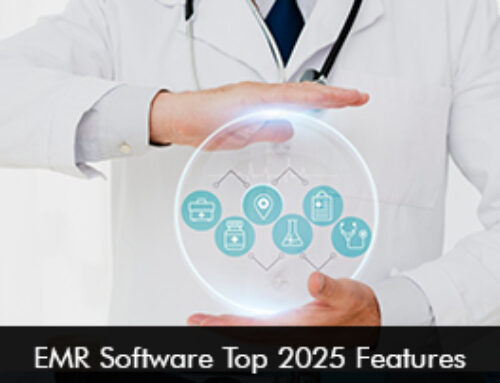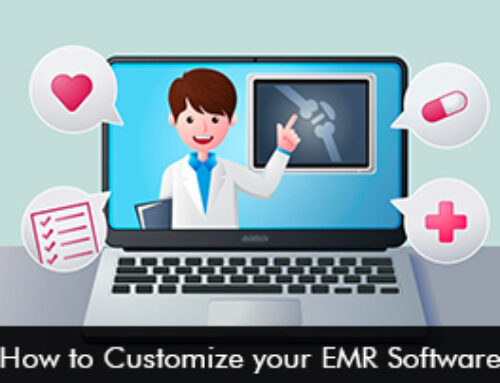As we move through 2025 and beyond, EMR software is expected to become more intelligent, interoperable, and patient-centric. This blog explores the current trends, future innovations, and key players shaping the next generation of EMR software.
Current Trends in EMR Software (2023-2024)
Before diving into the future, let’s look at the major trends currently influencing EMR software.
1. Increased Adoption of Cloud-Based EMR Software
Healthcare providers are shifting from on-premise EMR systems to cloud-based solutions due to their scalability, cost-efficiency, and remote accessibility. Cloud EMRs also reduce IT maintenance burdens and improve disaster recovery.
2. Focus on Interoperability
Seamless data exchange between different healthcare systems remains a challenge. However, FHIR (Fast Healthcare Interoperability Resources) standards and government mandates (like the 21st Century Cures Act) are pushing vendors to improve interoperability.
3. AI and Machine Learning Integration
AI is already being used for:
-
Predictive analytics (identifying at-risk patients)
-
Automated documentation (voice-to-text, NLP)
-
Clinical decision support (suggesting treatments based on patient history)
4. Patient-Centric EMR Software
Patients now demand more control over their health data. Patient portals, mobile health apps, and telehealth integrations are becoming standard features in modern EMRs.
5. Cybersecurity Enhancements
With rising cyberattacks on healthcare systems, EMR vendors are investing in blockchain, zero-trust security models, and advanced encryption to protect sensitive patient data.
Future Trends in EMR Software (2025 and Beyond)
The next wave of EMR innovation will be driven by AI, automation, and personalized medicine. Here’s what to expect:
1. AI-Driven Autonomous EMR Software
By 2025, EMRs will leverage generative AI to:
-
Auto-populate patient records from doctor-patient conversations
-
Predict disease progression using deep learning models
-
Automate billing and coding with near-perfect accuracy
2. Blockchain for Secure & Transparent Health Records
Blockchain could revolutionize EMRs by:
-
Preventing data tampering (immutable records)
-
Enabling patient-controlled data sharing
-
Streamlining insurance claims via smart contracts
3. Genomics and Precision Medicine Integration
Future EMRs will incorporate genomic data to provide personalized treatment plans. AI will analyze genetic markers alongside EHR data to recommend tailored therapies.
4. Internet of Medical Things (IoMT) Connectivity
Wearables and remote monitoring devices (like smart glucose monitors, ECG patches) will feed real-time data into EMRs, enabling continuous patient monitoring.
5. Voice and Gesture-Controlled EMR Software
Doctors will interact with EMRs using voice commands (like Alexa for healthcare) and gesture controls, reducing reliance on keyboards and clicks.
6. Augmented Reality (AR) for Surgical EMR Software
Surgeons may use AR glasses to view patient vitals, surgical history, and 3D anatomy models—all hands-free—during procedures.
7. Global Interoperability & Unified Health Records
By 2030, we may see a global EMR framework where a patient’s records are accessible anywhere in the world, breaking down silos between healthcare systems.
Leading EMR Vendors & Their Future Roadmaps
Several major EMR vendors are already investing in next-gen technologies. Here’s what they’re working on:
1. Epic Systems
-
Announcement: Epic is integrating generative AI (via Microsoft Azure OpenAI) to automate clinical documentation.
-
Future Focus: Expanding telehealth capabilities and global interoperability partnerships.
2. Cerner (Oracle Health)
-
Announcement: Oracle is infusing AI and machine learning into Cerner’s EMR to improve predictive analytics.
-
Future Focus: Cloud-first strategy with Oracle’s infrastructure for better scalability.
3. Allscripts (Veradigm)
-
Announcement: Investing in FHIR-based APIs for better third-party app integration.
-
Future Focus: Enhancing patient engagement tools and AI-driven analytics.
4. Meditech (Expanse)
-
Announcement: Rolling out voice-assisted charting and ambient AI documentation.
-
Future Focus: Strengthening community health and rural care solutions.
5. NextGen Healthcare
-
Announcement: Leveraging AI for revenue cycle management to reduce claim denials.
-
Future Focus: Expanding behavioral health and value-based care tools.







